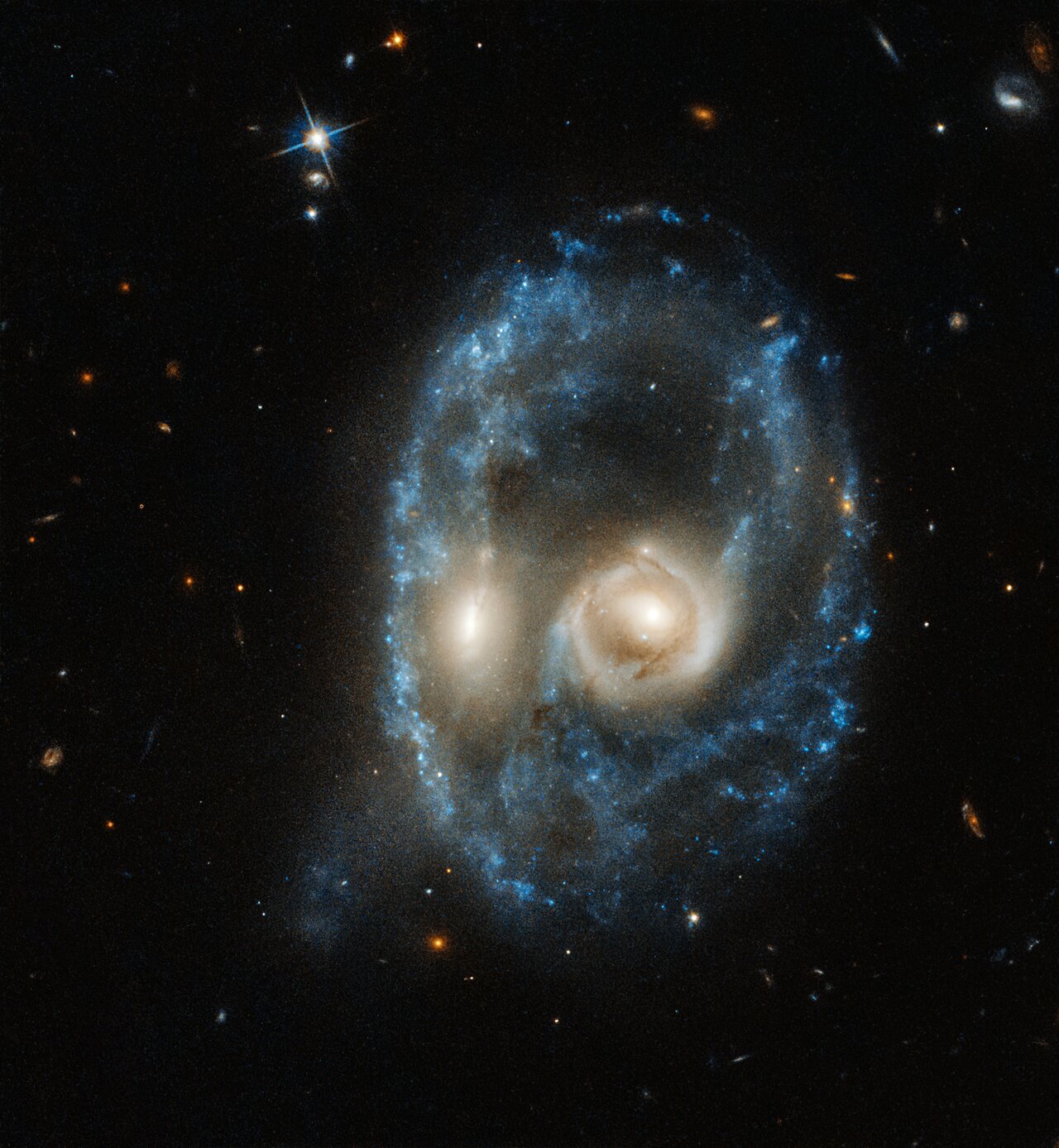
Just in time for Halloween, scientists from the European Space Agency have released this image captured by the Hubble Space Telescope showing what looks like a ghostly face peering out from the dark depths of space.
In the spooky-looking system, two galaxies are colliding in a violent encounter. When galaxies come close to each other like this, one galaxy may be destroyed by the other (which is what astronomers believe will happen to the Milky Way when it collides with the Large Magellanic Cloud in two billion years). Alternatively, the galaxies may merge peacefully to become one larger galaxy. Astronomers are still not entirely sure what determines whether colliding galaxies will lead to happy mergers or violent destruction, but they think it is related to the supermassive black holes which lie at the galaxies’ centers.
Another effect of two galaxies merging is that the disks of dust and gas which surround each galaxy become twisted and pulled by gravity. This can lead to merging galaxies with a variety of unusual shapes. In this case, the close proximity of the two galaxies has created a rare ring structure which is what gives the impression of eyes within the skull.
Only a few hundred ring galaxies are located in our galaxy, and this ring structure won’t last for long. We can only see the rings when the galaxies are at just the right orientation for us to see them straight-on, and soon the galaxies will complete their merger and the delicate rings will be lost.
The system is located 704 million light-years away from us, and it was logged in the astronomical catalog known as the Catalogue of Southern Peculiar Galaxies and Associations. The catalog of strange-looking cosmic objects was first compiled by astronomer Halton C. Arp in 1966, who then partnered with fellow astronomer Barry F. Madore to extend the catalog in 1987.
In the catalog, the system is called by the less-than-thrilling name Arp-Madore 2026-424 (AM 2026-424), but we prefer to call it the Spooky Skull galaxy.



